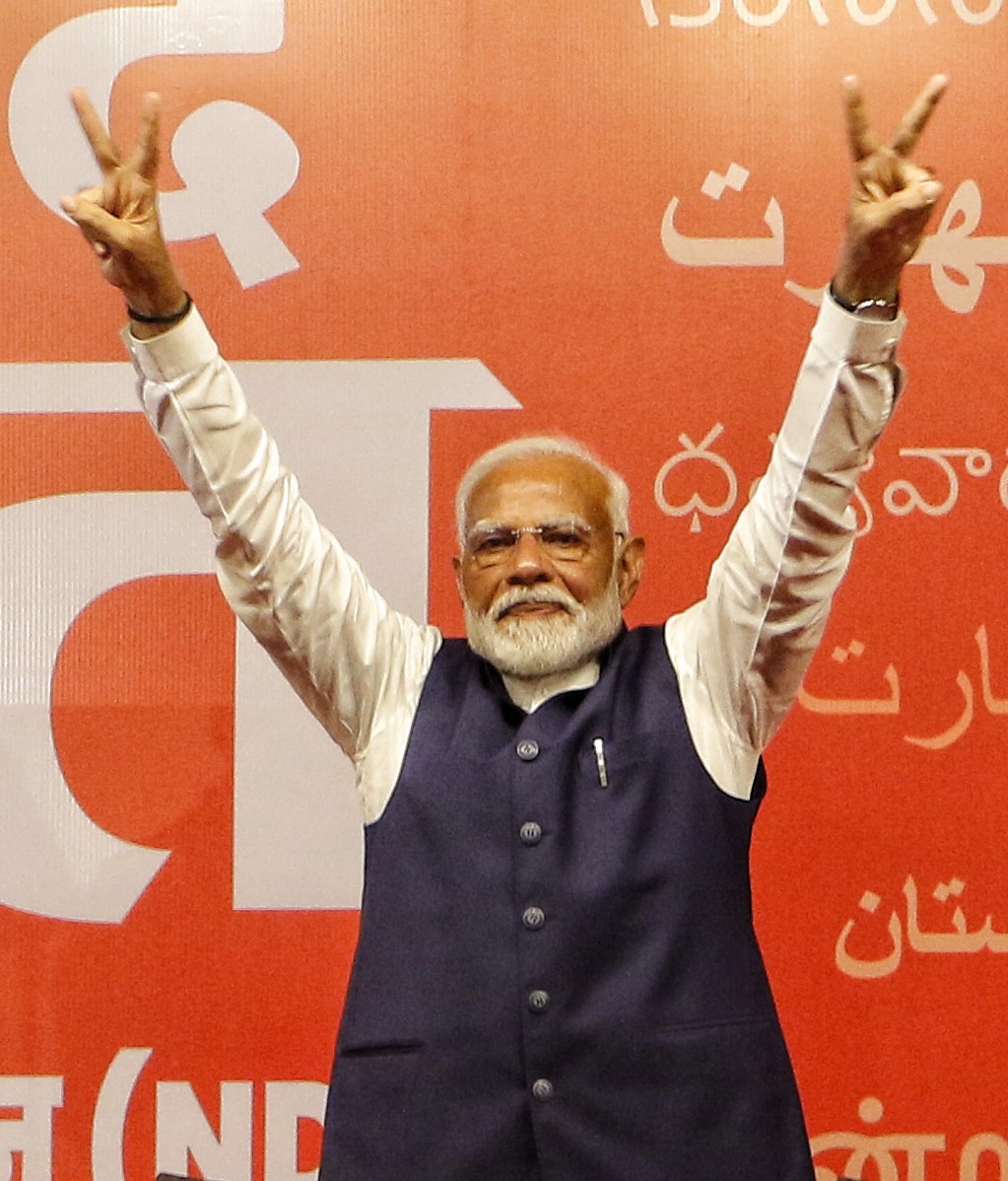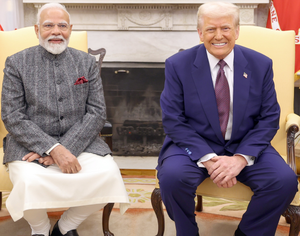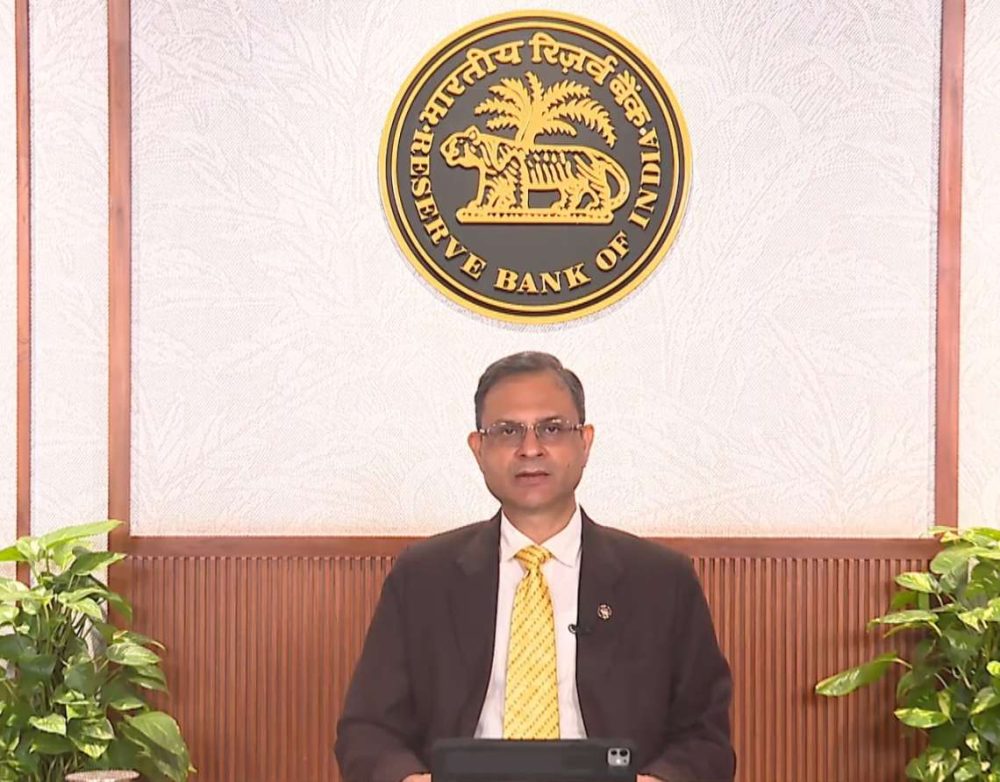This victory indicates continuity in policy, particularly in infrastructure spending and boosting domestic manufacturing…reports Asian Lite News
The Bharatiya Janata Party (BJP)-led National Democratic Alliance (NDA) secured a majority in the general elections, securing a third term for Prime Minister Narendra Modi.
This victory indicates continuity in policy, particularly in infrastructure spending and boosting domestic manufacturing, which are expected to support robust economic growth.
However, the NDA’s slim margin of victory and the BJP’s loss of an outright majority in parliament may slow down more extensive economic and fiscal reforms, potentially impeding fiscal consolidation efforts.
In fiscal 2023-24, India’s real GDP accelerated to 8.2 per cent from 7.0 per cent the previous year, driven by significant gains in gross fixed capital formation as the government’s infrastructure programs gained momentum, even as private consumption remained subdued.
Moody’s projects India’s economic strength to continue, with an anticipated real GDP growth of around 7 per cent over the three-year period from fiscal 2023-24 to 2025-26. This growth is expected to benefit from ongoing infrastructure development and digitalization efforts.
Despite this outlook, structural weaknesses pose risks to long-term growth potential. High youth unemployment and low productivity growth in the agriculture sector constrain economic expansion.
The agricultural sector’s modernization has been stalled by political challenges, as evidenced by the repeal of key reforms in 2021 following widespread farmer protests.
Additionally, gains in manufacturing have been uneven, limiting labour force diversification away from agriculture, which still accounts for 40 per cent of total employment.
Foreign direct investment (FDI) inflows have declined over the past three years, despite a favourable geopolitical climate amid US-China tensions.
This trend suggests persistent constraints within India’s investment climate. To address these challenges, further structural reforms and enhanced implementation of existing initiatives, such as the production-linked incentive schemes to promote manufacturing, calibrated liberalisation of cross-border trade, and reconsideration of labour reforms, are necessary.

The government’s focus on fiscal consolidation is expected to continue, but significant improvements in debt ratios and interest servicing have yet to be realised.
Since the trough in fiscal 2020-21, the central government’s deficit has likely narrowed for three consecutive years.
The interim budget for fiscal 2024-25 projects a deficit of around 5 per cent of GDP, aiming for a 4.5 per cent deficit by fiscal 2025-26. However, India’s fiscal consolidation post-pandemic has not outpaced other emerging markets in Asia-Pacific, and its fiscal and debt metrics remain weaker than those of Indonesia, the Philippines, Thailand, and other Baa-rated peers globally.
India’s general government debt is projected to stabilise above 80 per cent of GDP over the next three years, compared to 70.5 per cent in fiscal 2018-19.
General government interest payments are forecast to fall to around 24 per cent of general government revenue over the next two years, down from over 28 per cent in fiscal 2020-21, but still higher than the pre-pandemic ratio of less than 23 per cent.
While increased budgetary allocations for infrastructure indicate an improvement in spending quality, debt servicing remains a significant portion of expenditure, reflecting ongoing constraints on fiscal flexibility.
This situation underscores the need for the incoming government to balance fiscal consolidation with growth-supportive measures.
The upcoming final budget for the fiscal year ending March 2025 will provide further insights into India’s fiscal policy direction through 2029.
As the Modi administration embarks on its third term, the focus will likely remain on sustaining economic growth while addressing the persistent fiscal challenges that hinder India’s long-term economic potential. (ANI)

Rate Cut Unlikely
The Reserve Bank of India (RBI) is unlikely to reduce the benchmark interest rate in its monetary policy review meeting. The meeting, chaired by Reserve Bank Governor Shaktikanta Das, is underway in Mumbai.
The decision of the MPC (Monetary Policy Committee) will be announced on June 7 (Friday). This meeting is taking place soon after a weaker but clear mandate is given by the electorate for the NDA government, led by the BJP.
The central bank last hiked the repo rate to 6.5 per cent, in February 2023 and since then it has held the rate at the same level in the previous seven bi-monthly policies. If RBI decides to keep interest rates untouched again on June 7, it would be the eighth time for the central bank to maintain the status quo on the benchmark repo rate.
RBI has to decide on interest rates amidst challenges of inflation, especially food inflation. Experts say RBI is unlikely to cut the rate, considering the current growth momentum which is revised upwards by most rating agencies.
If the interest rate remains untouched again on June 7, it would be the eighth time for the RBI to maintain the status quo on the benchmark repo rate.
“It is widely expected that the MPC will hold the policy rate in the eighth consecutive meeting. The inflation rate, particularly the food inflation continues to be much higher than the target rate of 4 per cent” said M. Govinda Rao, Member, of the Fourteenth Finance Commission and former Director, of the National Institute of Public Finance and Policy.
The food inflation is continuously posing a challenge, in April the consumer food price inflation surged to 8.70 per cent from 8.52 per cent in March, according to data from the Ministry of Statistics & Programme Implementation.
As per the data the food inflation rose by 1.03 per cent in urban areas and 0.59 per cent in rural areas, with combined food inflation in India increasing by 0.74 per cent.
However, experts also point out that the prospect of an above-normal monsoon and favourable agricultural production in the coming months is expected to contribute to a reduction in food inflation. This optimistic outlook could potentially alleviate inflationary pressures and provide relief to consumers grappling with high food prices. (ANI)
ALSO READ: Bloodbath in India Stocks














